A good percentage of Tiny Homes are built with wheels to allow for mobility. Having multiple options for power matches this portability, giving Tiny House owners the ability to plug in wherever they are. The Tiny House on wheels can be plugged into the grid, but also into off- grid power sources like gas generators or alternative power systems like solar.
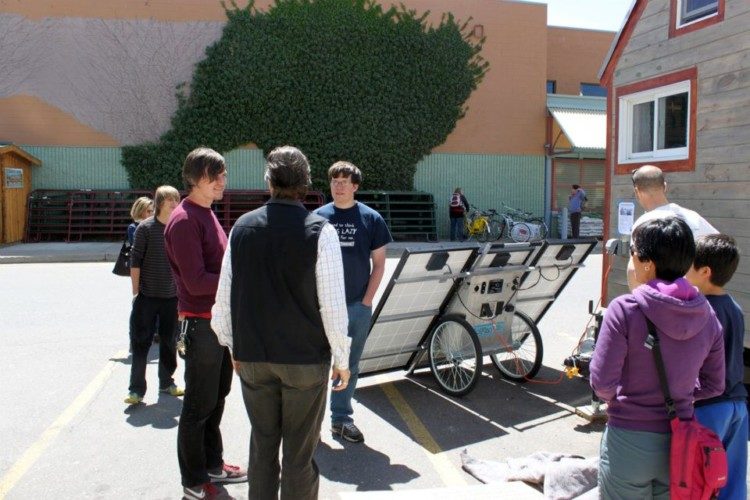
The question is, how do you wire Tiny Homes for electricity effectively to allow for multiple inputs? Here is a brief overview that will get a Tiny Home started.
Firstly, it is important to note that setting up a Tiny Home with mobility in mind is different than setting one up that will be fixed to one location with constant grid access. The latter requires more attention to local zoning, code regulations and NEC guidelines.
This article will focus on the mobile option, whereby the Tiny Home is treated more like an RV or trailer. As with any critical electric wiring, you should make sure that it is done in a safe manner with a licensed electrician aware of national electric code and local regulations.
A key action that will help your versatility in locations and power options is to use propane for all cooking, heating and hot water. This vastly lowers your electrical needs, while opening the door to have smaller extension cords for plug ins, use a smaller gas generator and utilize small solar power systems.
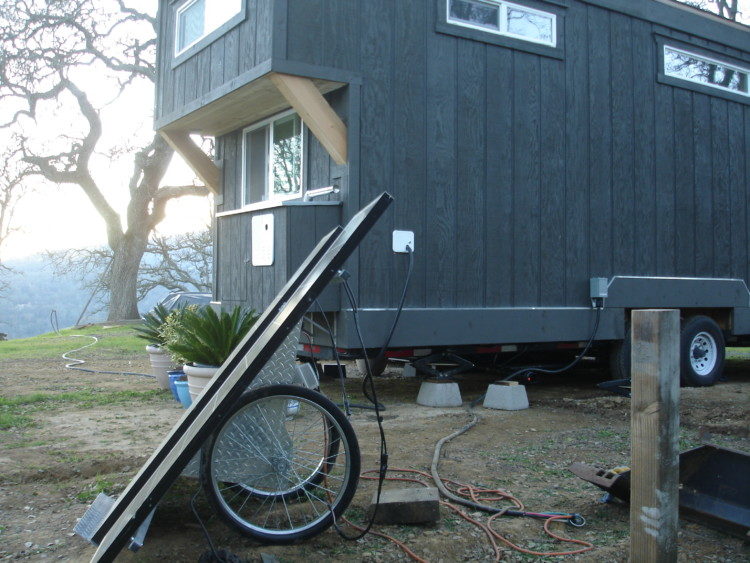
As Tiny House living requires you to manage your space, so does mobile Tiny House living call for you to manage your energy usage. Furthermore, if you want your Tiny Home to work with most power sources, ensure that you stay away from 220 volt and a huge 50 amp input plugin.
The most common Tiny Home electrical setup is with a 30 amp RV plug or twist-lock 120 volt input. This is then wired to a small sub-panel box with split circuits and breakers for a few different inputs like lighting, electronics, refrigerator and other needs.
The 30 amp input system will allow you to run higher electric draws like a blender, toaster oven, heater or small air conditioner, provided you manage what all is plugged in. To run these items and give you a max of 30 amps you will need grid access with a dedicated 30 amp/120 volt plug or a larger gas generator (in the 4000-5000 watt range).

The other option is to get a 30 amp to 20 amp duplex adaptor that will shift your energy input needs down. This allows any 15 to 20 amp duplex outlet from the grid, a smaller gas generator or a small solar power system to work for you.
Regardless of what option you choose, have a 50 to 100 foot heavy duty 10 or 12 gauge outdoor extension cord to run from your power source to the Tiny House. This will prevent power loss and keep your electric going strong.
So what happens if you pull more than your allocated amps? Your grid main panel, gas generator or solar system breaker pops. Then, your electric goes off until you remove the electrical load that caused the overload and flip the breaker at your source back on.
To avoid this, ensure you manage your usage so that your different electrical applications use less than the amps available to you via your energy source. A nice way to do this is to stagger your usage of higher draw items so that everything isn’t plugged in at once.
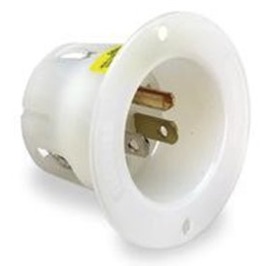

Another option that will really secure your Tiny House power needs is to utilize a split sub-panel box with dual feeds in. This is the ultimate versatile and flexible power setup. On one side you can have a 15 or 20 amp duplex input split between your basic household items like LED lights, consumer electronics and refrigerator. This can be connected from any input via a duplex extension cord.
Then, on the other side, have a second feed in which is 20 amp duplex, 30 amp RV or 30 amp twist lock for occasional heavy energy use products like a washer/dryer, electric heater, small air conditioner or other heavy electrical draw applications. This can be connected to via a heavy duty extension cord from an additional off-grid power source or a separate on-grid circuit.
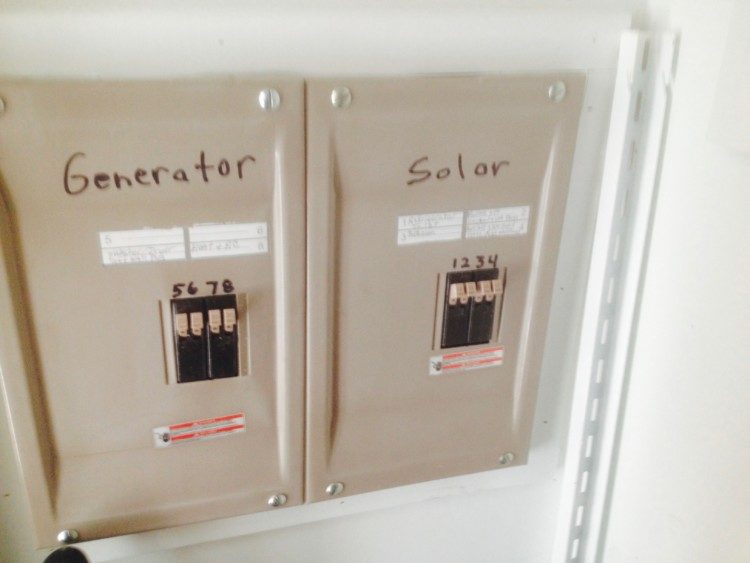
The split feed, dual sub-panel electrical setup is the preferred option for solar energy systems because of its versatility with multiple power inputs. For example, you can run your more efficient items straight off the solar system and the higher draw ones off a gas generator or grid access if available. This split feed arrangement also gives you maximum flexibility with mobile Tiny Homes based on the wide availability of 15 or 20 amp outlets when on-grid.
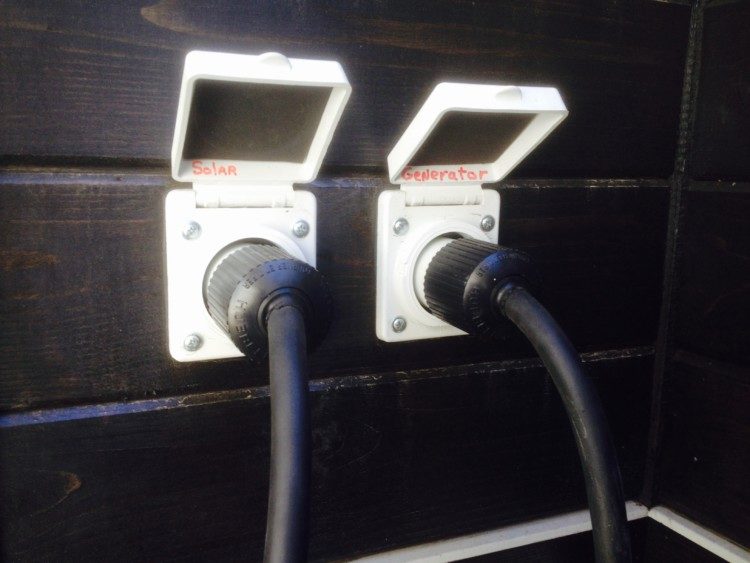
Hopefully, this gives a nice outline of the electricity options for Tiny Homes. The more you plan ahead and manage your usage, the more options you will have!
-The SolSolutions Team
SolSolutions is an off-grid and Tiny Home solar specialist. If you have additional questions or want more information on wiring Tiny Homes for electricity, contact SolSolutions at (707) 515-6783, e-mail info@sol- solutions.com or visit our website www.sol-solutions.com.


It is mentioned in the article that the tiny home might be treated like an “RV or trailer”. If so, I think the commonly used romex wiring is a no-no. I think many DIY tiny home builders use romex wiring, like what is used in a stationary house. But the vibrations of transport over the road means multi-strand wiring is needed for the wires in the walls and ceiling. The solid wire romex can break due to vibrations and then a short in the walls or ceiling can occur – causing a fire or worse. A good tiny house builder would know this, but many tiny house start ups may not. Since most tiny houses are never inspected by a building authority, this is an important detail to be aware of.
This is nonsense. I just tore down a 20ft nomad camper trailer and it was full of 14/2 romex.
Congratulations to all board passers. To those who didn’t make it, it’s not a failure; treat this as a challenge to excel. The successful examinees who garnered the ten (10) highest places in the REGISTERED ELECTRICAL ENGINEER Licensure Examination
The post looking amazing but it is quite difficult to implement the wiring in tiny homes.
I’m so fascinated by these tiny houses! Thanks for the info!
So what’s the final verdict re romex verses multi-strand wiring?
This is very interesting,but quite hard to apply even cost wise also it bit more. Implying solar method is better way because its free energy source and can use instantly or we can save and use later. Again if we use fuel source its not worth.
Concept is wonderful.Thank you for posting.
I did not know there are lots of safety issues with this. I will be forever grateful that I came across this article and it can save lives as well.
Hello,
I see you said to stay away from 220 volt outlets and a 50amp input. My tiny house is 50amp, and the outlets are all standard 110 volt. However, we need to increase one of the outlets in the kitchen to 220 volt for our induction stove top we just bought. Do you know if we would need to install an entirely new circuit breaker, in the kitchen, for this? If so, how do we keep everything within the 50amp? Or, can we run wire throughout the house from the original breaker to the kitchen with an added 220 volt to connect to the stove top? Thanks for your time.
Sincerely,
Chelsea Owens
I love that you talked about knowing what your tiny home can handle and how it is usually a 30 amp RV plug. My husband and I are looking for a circuit breaker panel installation service that can help us with our new circuit breaker. We will keep these tips in mind as we search for a professional that fits our needs best.
It’s good to know that the most common electrical setups for a tiny home are the 30 amp RV plugs. My brother is building a tiny home right now and he needs a lot of help with the electrical work. He needs to make sure that he hires a professional to help with this job so that it’s installed properly and there aren’t any electrical issues in the future.